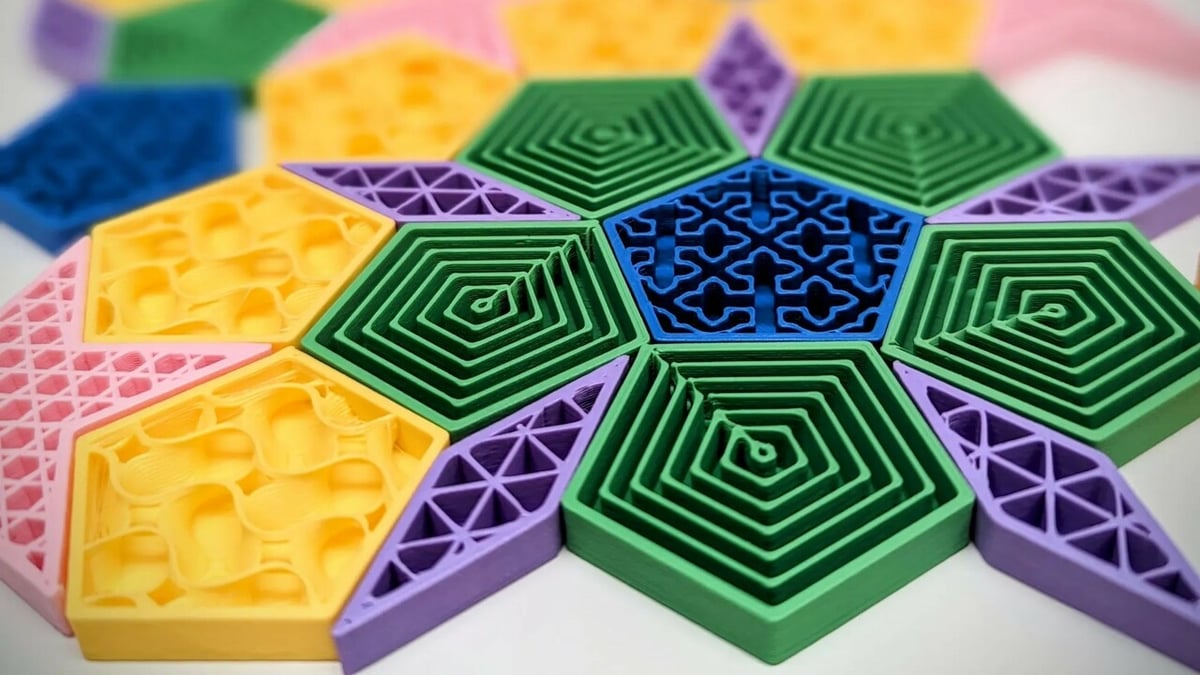If you have a 3D printer, you’re probably familiar with infill, the “filling” that allows printed models to be solid, hollow, or anything in between. Infill is something unique to 3D printing because conventionally manufactured parts are typically completely solid or hollow.
Infill density and infill pattern are two slicer settings that determine how a 3D printer will print infill. Both settings strongly impact a printed object’s mechanical properties, so you’ll want to pay attention to these settings if you’re looking to print strong parts. Yet, it’s also important to keep in mind that many other factors besides infill go into a print’s strength (material and shells, for example).
In this article, we’ll focus on infill patterns, specifically those that are likely to yield strong prints. To guide our discussion, we’ll use a few of the best patterns available in popular slicers like Cura and PrusaSlicer. Before we do anything, though, let’s first discuss the infill density and pattern settings in more detail.
All About Infill
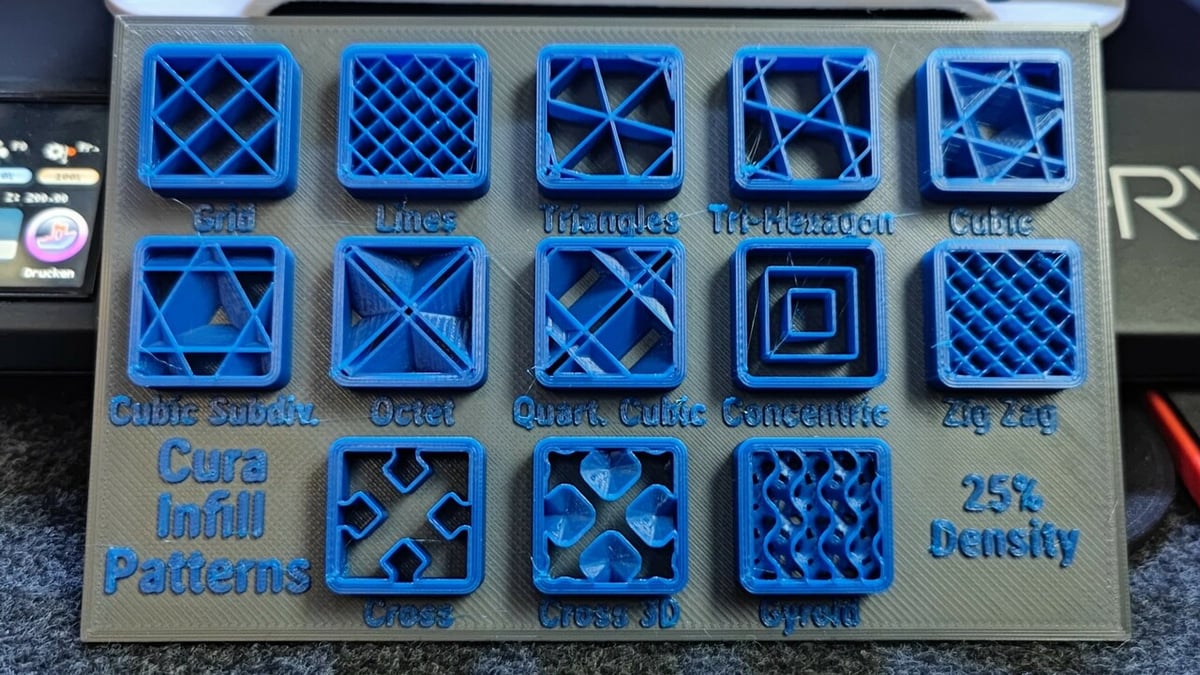
Essentially, infill density refers to how solid the inside of a 3D print is. This is usually expressed as a percentage: 100% would be completely solid, while 0% would be hollow. The infill pattern, then, is the form or shape of the infill’s structure inside the print.
Typically, the higher the infill density percentage, the higher the strength (as well as material consumption, weight, and print time) and the lower the flexibility. But the infill pattern can also affect strength depending on how the structure and layout of the lines disperse forces internally. In this way, just like other settings (e.g. layer height), different patterns are useful for different applications.
There are many infill patterns available across different slicing platforms, but only some are meant to produce high-strength components. Most of them – like the lines, zig-zag, and cross patterns – are meant for regular prints that won’t face much physical stress but still need to be somewhat durable. To learn more about the various infill patterns, you can check out our article on Cura’s infill patterns.
Considerations

To evaluate which infill pattern yields the strongest parts, there are a couple of important considerations we should discuss. The first is the directional strength of an infill pattern, and the second is the type of strength measured in testing.
Directional Strength
Not all patterns provide the same strength across all three axes (X, Y, Z), and many are more suited towards certain planes. For example, the grid pattern offers great strength along the Z-axis (perpendicular to layer lines) but is weaker throughout the XY-plane (parallel to layer lines). To get the most out of patterns that are strongest along certain axes, consider orienting your model so that the part of the print that needs to be strong is aligned with the axis along which the infill pattern is strongest.
There are also 3D patterns that provide strength more balanced across the three axes. As a tradeoff, the individual axis strength is reduced. For example, the gyroid infill pattern provides mostly balanced strength in all three directions, but it’s not the strongest pattern along the Z-axis.
Types of Strength
The second important consideration is the type of strength measured in testing an infill pattern. In this article, we’ll present the most common infill patterns and their performance in two strength tests: elongation and compression. The former involves applying force at the two ends of a sample to pull it apart, while the latter is the inward application of force on a sample, essentially squishing it until it breaks.
Both tests are valid ways of determining the strength of an infill pattern and are quantified in terms of the force a sample can take before it fails, but they inform us about different use cases. In the real world, parts are often subjected to a combination of tensile and compression stresses at the same time.
Consider holding a rod at each end and bending it to snap it in half. The outer face is in tension as the ends get pulled away from each other, forming cracks in the surface. Meanwhile, the inner half gets compressed, forcing material out of the newly developed crease.
Tensile
The elongation test gives us an estimate of tensile strength, which can inform us about a part’s resistance to stresses that try to stretch it. This type of strength is essential to know for applications like buckles and clips.
The standard tensile strength test is conducted using dogbone-shaped samples and places stress on only one axis. As we established, 3D printed samples are anisotropic, meaning their strength will not be the same in all directions. Pulling the Z direction requires enough force to cause layer delamination, which is much less force than what’s needed to break each filament layer when pulling in the XY direction. In these tests, pulling is done in the XY direction.
Compression
A compression test indicates how well a part resists inward force and should be considered for load-bearing applications, such as shelf brackets.
A standard compression strength test uses strip-shaped samples that are held vertically between two parallel plates and squished. Just like for tensile tests, the compression strength of 3D printed parts is anisotropic, but the degree to which is more heavily influenced by the infill pattern and how effective it is at distributing stresses internally. Testing should be done in both the XY and Z directions for a full picture of a pattern’s performance.
The Tests
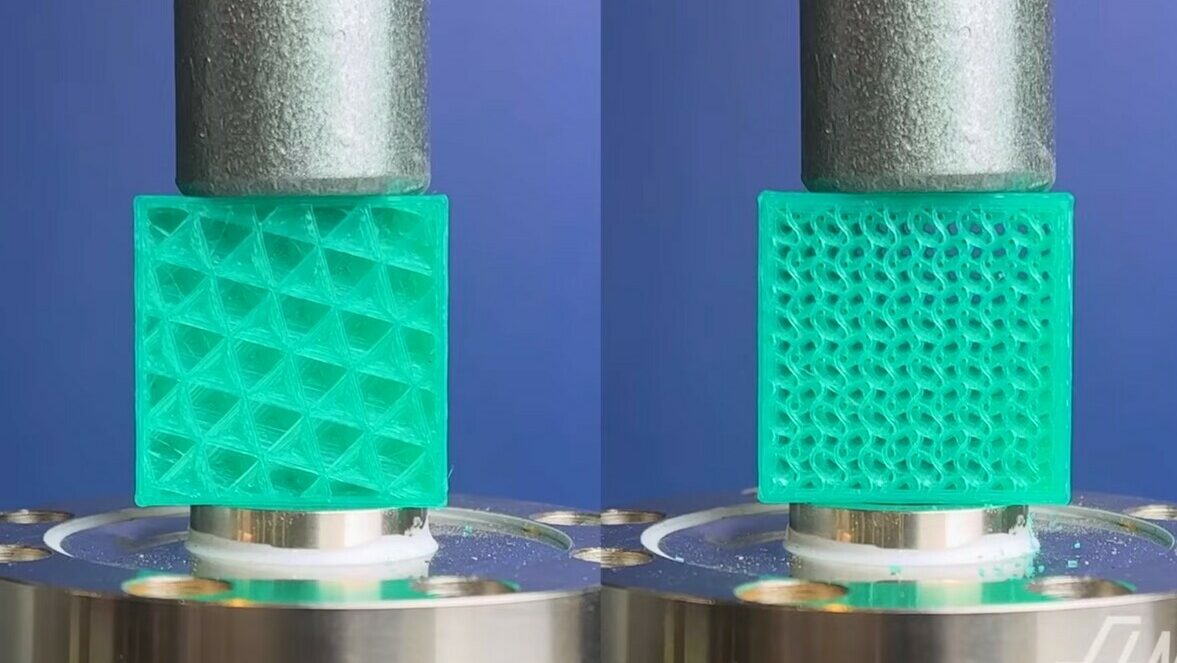
Before we go over the patterns, it’s important to review our sources. We’ve compiled data from the following six sets of tests to provide an unbiased and objective look at the best infill patterns:
- Infill and Shell Thickness Strength Test (CNC Kitchen): Tensile strength test in XY direction on hook-shaped prints with 30% infill.
- Infill Pattern Strength Test (CNC Kitchen): Compression strength test in both XY and Z direction on cube-shaped prints, each side 20 mm long with 10% infill.
- Infill Pattern Strength Test (Slant 3D): Compression strength test in the XY direction on cube-shaped prints with 20% infill.
- Infill Patterns Strength Test (The Machine Bros Solutions): Tensile strength test in XY direction on standard dogbone-shaped prints with 30-42% infill, normalized for weight.
- Compressive Strength Assessment of 3D Printing Infill Patterns (Pernet et al.): Compression strength test in Z direction on standard (ASTM D695) cylinder-shaped prints with 20, 40, 60, 80, and 100% infill.
- A Tensile Strength Assessment of Infill Patterns (Lalegani et al.): Tensile strength in XY direction on standard (ASTM D638) dogbone-shaped prints with 10-50% infill, depending on the pattern.
Three of these tests focus on tensile strength, while the other three focus on compression strength. As you can see, we have a balanced insight into material strength here. While there are other tests out there, we chose these six because they evaluate multiple infill patterns at once using the same conditions (temperature, printing device, filament brand, print settings, slicer, etc.), allowing us to compare the performances of infill patterns relative to each other.
However, the problem with all of these studies is that they each take their own approach to the test, be it the non-standard sample geometry that CNC Kitchen used that includes shear forces or the various infill percentages used across all studies. The Machine Bros Solutions are the only ones who normalized for weight, but this meant infill percentages varied from 30%-42%. Pernet et al. tested multiple infill percentages but only conducted tests in the Z direction. Clearly, a single, all-encompassing evaluation is yet to be produced, therefore it’s important to take a comprehensive look at all of the data out there.
It’s also important to note that not all the infill patterns were tested in all the studies. The most common ones (grid, rectilinear, triangles, and honeycomb) found themselves present in most of the tests, if not in all of them. On the other hand, patterns like cubic, gyroid, and lines were only tested in the three compression tests. Last but not least, the concentric pattern was only tested once per type of test.
With that in mind, we compiled all of the data from these studies and took a look at the performance of each infill pattern across the various tests. To summarize our findings, we took the overall best-performing infill patterns and gave them a “High” strength rating, the worst-performing patterns received a “Low” strength rating, and patterns in the middle received a “medium” strength rating.
The Contenders
Now that you know a little more about infill and types of strength, it’s time to review the strongest infill patterns. Below, we discuss the eight strongest patterns that can be found in Cura or PrusaSlicer.
Grid
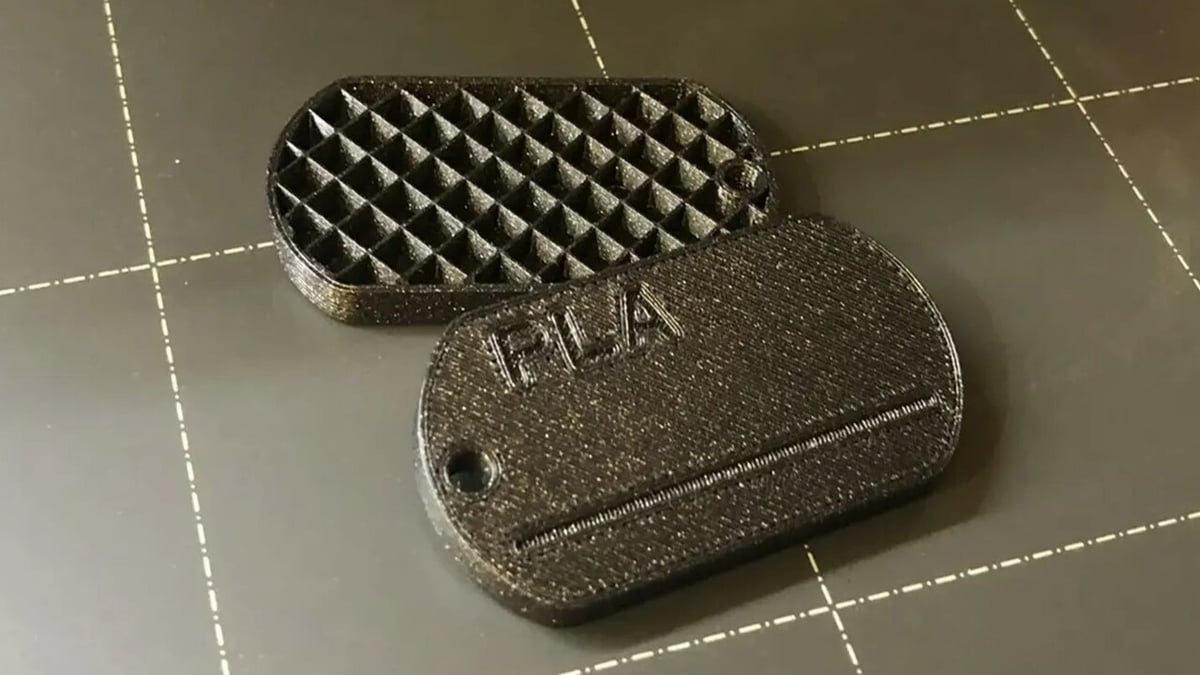
Simplistic in nature, the grid pattern is comprised of two sets of lines that cross each other at the same point in each layer. The strength of the grid pattern comes from overlapping lines in this pattern, which provides a lot of support for the printed structure.
This is one of the few patterns that was included in all six tests. When compared to the other infills, the grid pattern found itself at the lower end in all three tensile studies. The Machine Bros found it to be the worst performer when normalizing its strength for weight.
While it wasn’t the worst performer in the compression tests, it was the second worst, so not much better. In the compression test carried out by CNC Kitchen, they found substantially greater (around 70%) strength when changing the orientation from the XY direction to the Z direction. As a 2D pattern whose layers print directly on top of the previous layer, this comes as no big surprise.
- Tensile strength: Low
- Compression strength: Low
Rectilinear (Zig-Zag)
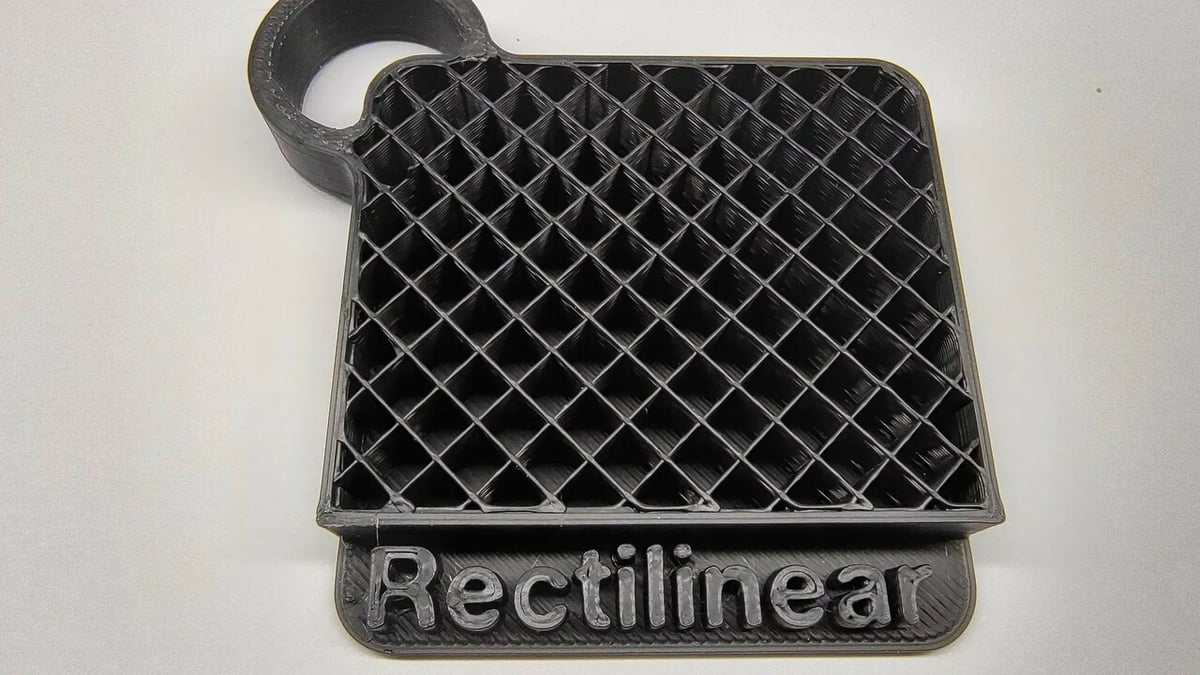
The rectilinear (zig-zag) pattern is similar to the grid pattern but only prints lines in one direction on a given layer, flipping the printing orientation 90° to print the next layer. It’s one of the fastest printing infill patterns, making it a popular choice.
This is another contender that was present in all the tests. Similar to the grid infill, the rectilinear pattern’s performance was on the lower end in both tensile and compression strength tests. In the tensile strength tests, rectilinear consistently performed worse than grid except in the study from Lalegani et al., where standard dogbone-shaped samples were used, suggesting it performs better on a certain axis than under shear stress.
In the compression strength test, results were consistent across the studies. They again found that its compression strength in the Z direction was considerably greater than in the XY direction by around 60%. Being a 2D infill pattern, it makes sense for this direction to be well reinforced.
- Tensile strength: Low
- Compression strength: Low
Triangles
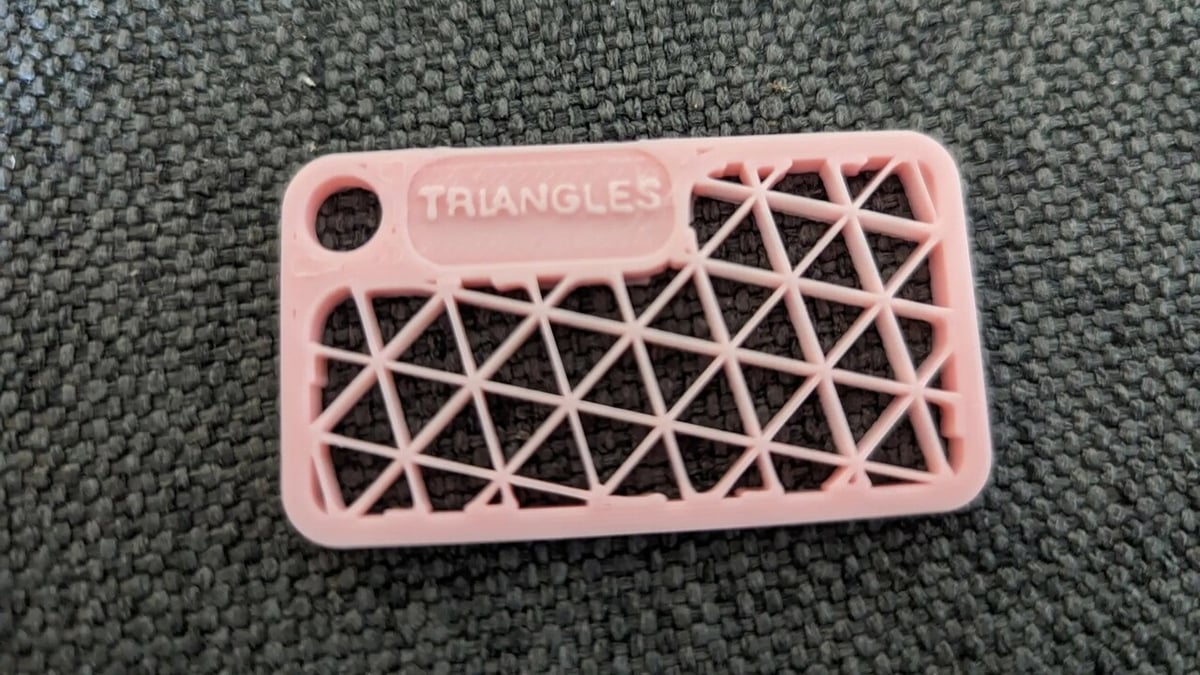
The triangle pattern is similar to the grid pattern, but instead of right-angle crossings, this pattern crosses at 60 degrees. The strength of this pattern comes from the fact that triangles are one of the strongest geometries in nature, as each side can effectively distribute stress to the other two.
The triangle pattern was the last of three contenders that were present in the six tests. Across the three tensile studies, there was substantial variation in the performance of the triangle pattern. While CNC Kitchen found this pattern to be the strongest, the tests carried out by Lalegani et al. and The Machine Bros Solutions showed lower strength compared to other infill patterns, like grid. This suggests triangles may be a great infill for protection against shear forces.
Compression strength results showed more consistent results across the studies, performing better than both grid and rectilinear in all conditions. Its strongest direction is the Z direction, suggesting again that 2D infill patterns perform well under compression perpendicular to layer lines. In the XY direction, triangles was stronger than grid or rectilinear, likely attributable to the stress-dissipating nature of the triangle shape.
- Tensile strength: Medium
- Compression strength: Medium
Lines
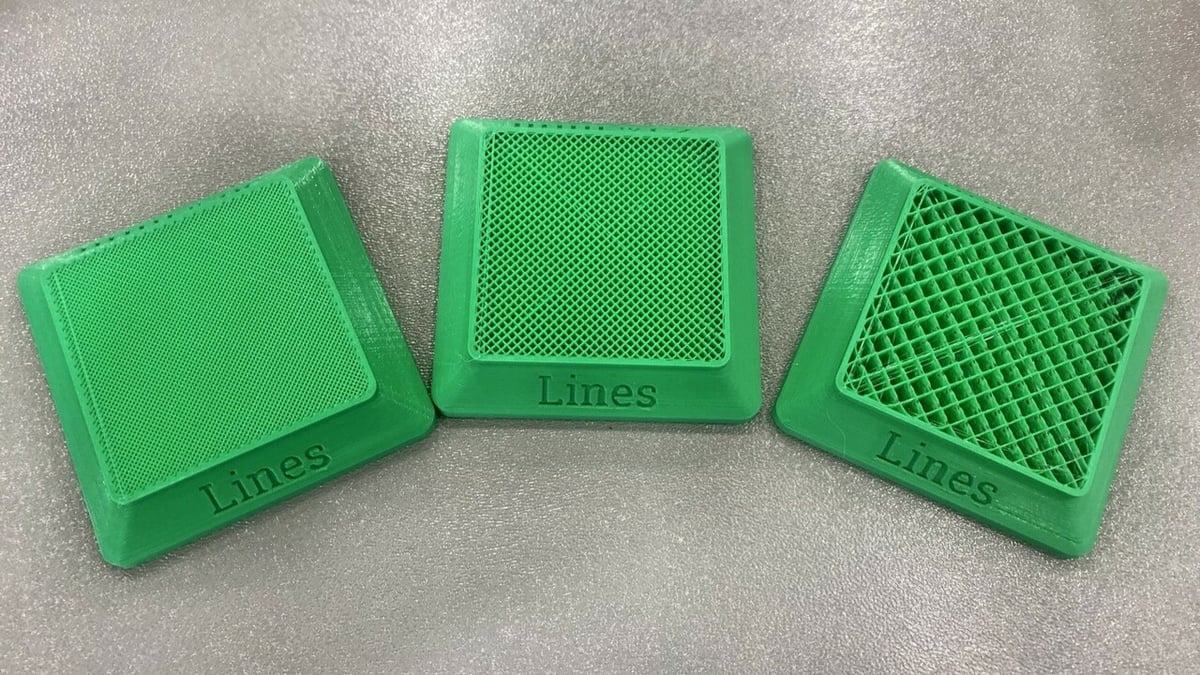
Similar to the rectilinear pattern, the lines infill pattern features a set of lines that are printed in one direction in one layer and in the opposite direction in the next layer. The key difference is that the extruded lines of a single layer do not overlap. This makes it one of the fastest infill patterns to print with.
This pattern was tested only for compression strength, and the results were considerably consistent across the studies. CNC Kitchen and Pernet et al. tested the infill pattern along the Z direction, where it proved to be one of the strongest patterns. However, along the XY direction, both Slant 3D and CNC Kitchen found it to have mid-range strength that was better than grid and rectilinear but worse than the 3D patterns.
- Tensile strength: Not tested
- Compression strength: Medium
Gyroid

The 3D gyroid infill pattern is by far the coolest looking. It utilizes repeated mathematically calculated curves stacked in an unordinary way. This pattern’s strength comes from the overlap between the curves about every three layers (depending on the slicer) and the mathematical nature of the curve’s shape.
The effectiveness of the curves at distributing loads internally may be the reason it was consistently a decent performer in the compression tests. While it wasn’t the strongest pattern, it was the most uniform, offering similar strength in all directions. This is similar, yet slightly weaker, behavior to the other 3D infill pattern, cubic.
Unfortunately, it looks like its popularity wasn’t enough to be considered for the tensile strength tests.
- Tensile strength: Not tested
- Compression strength: Medium
Concentric
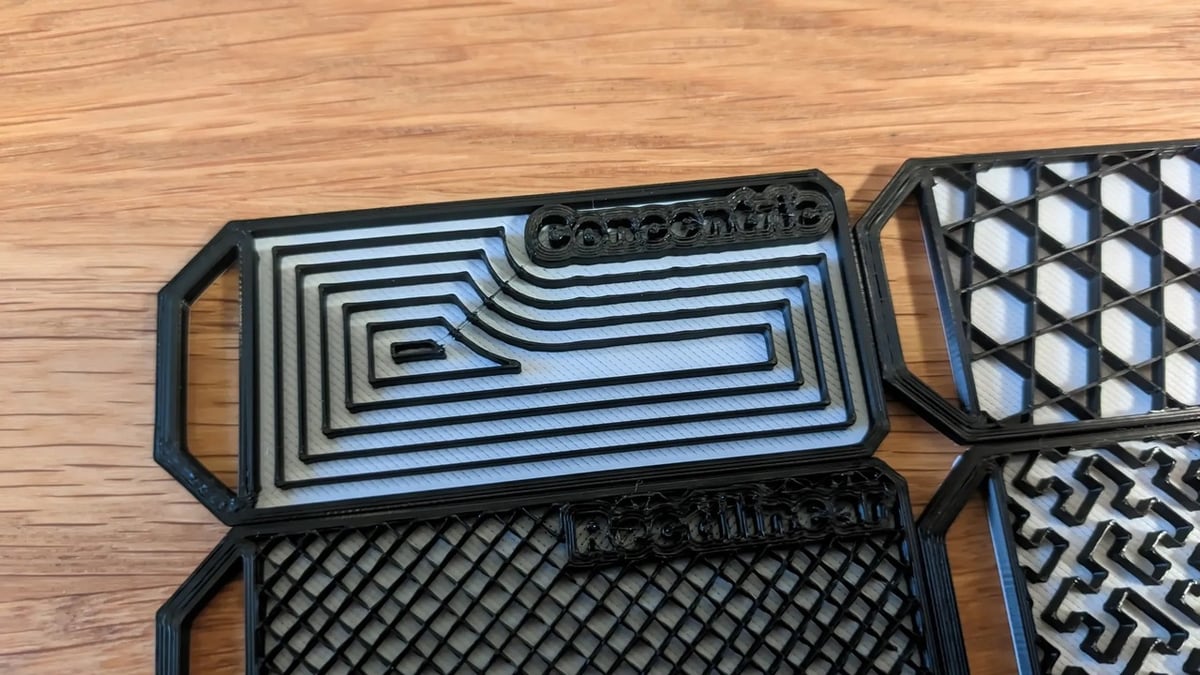
Here’s one of the most unconventional patterns you’ll find out there. Its excellent flexible properties compensate for its lack of isotropic practicality, structurally speaking. Ideal for flexible designs, it’s surprising how well it performed during the tests.
This pattern is our underdog contender. Before sharing the results, we must mention that it was only tested by Lalegani et al. for tensile strength and by Pernet et al. for compression strength. However, these two tests followed the official standards for testing: the ASTM D638 standard for tensile strength tests, and the ASTM D695 standard for compression strength tests.
In those studies, the concentric pattern ranked first for tensile strength and second for compression strength in the Z direction. However, it wasn’t tested for compression along the XY direction, which would be its weakest point based on its structure. Nevertheless, its strength in the Z direction for both tension and compression loads is nothing to overlook.
- Tensile strength: High (Z direction)
- Compression strength: High (Z direction)
Cubic

The cubic infill pattern generates diagonally stacked cubes, resembling regular and inverted pyramids when printing. This pattern provides three-dimensional strength due to the structural integrity of the crossing triangles involved.
While this infill pattern wasn’t tested for tensile strength, it performed considerably better than the previous contenders during the compression strength tests. As a 3D pattern, the strength is less dependent on the direction of force. CNC Kitchen performed compression tests in both Z and XY directions and showed the latter only slightly stronger and the best performer overall.
Slant 3D, testing in the XY direction, also found the cubic pattern to be the strongest infill out of all tested, while Pernet et al. – testing in the Z direction – reported mid-range compression strength. Note that this is the opposite of the behavior we observed with the previous 2D infill patterns, where the strength along the Z-direction was substantially greater. This could potentially be a consequence of being a 3D structure, where layers aren’t printed directly on top of each other, so stress can’t travel directly downwards.
Another interesting fact from CNC Kitchen about this pattern is that it took a noticeably longer time to print, with a 125% normalized print time, and a model weight similar to most other patterns, if not less.
- Tensile strength: Not tested
- Compression strength: High
Honeycomb
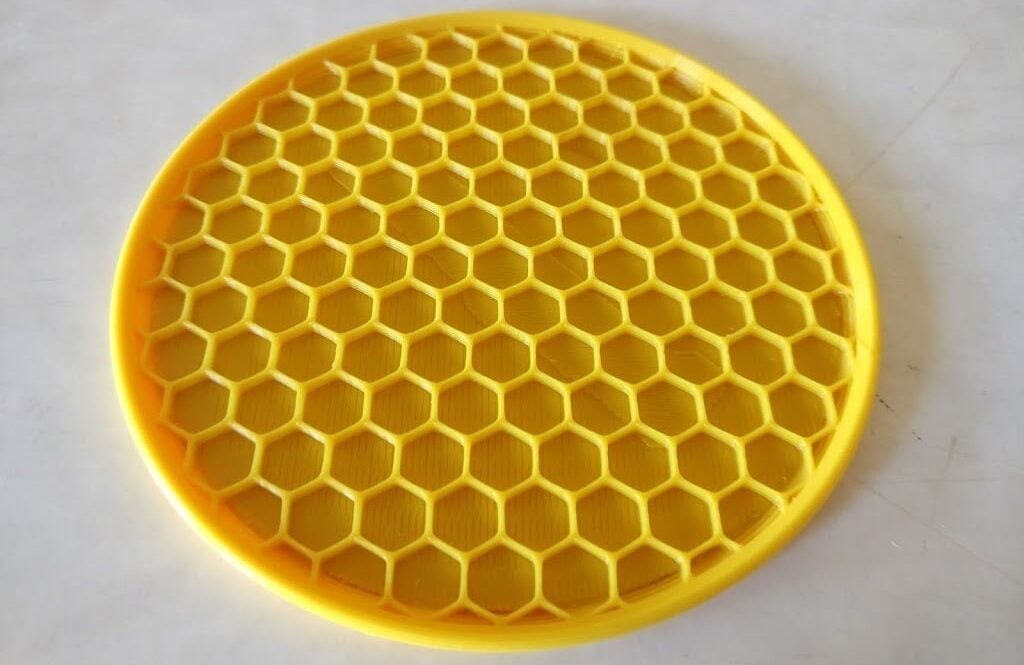
The honeycomb pattern copies the generic shape of a honeycomb and repeats the small hexagonal 2D structures over the area of a model. The strength of this pattern comes from the alternating interlocking of rigid geometric shapes. It’s no surprise why this pattern is one of nature’s favorite structures.
This popular pattern made it to the podium with one of the best all-around performances and a presence in two of the three tests for both tensile strength (CNC Kitchen and The Machine Bros Solutions) and compression strength (CNC Kitchen and Slant 3D). It performed well under both pulling and pressing conditions consistently across the various studies.
In terms of tensile strength, it performed the best out of all the infills tested by The Machine Bros Solutions and second only to the triangles pattern in CNC Kitchen’s study.
The compression strength along the Z direction was greater than that along the XY direction, a now typical behavior observed in 2D infill patterns. In this case, a 60% greater compression strength in the Z direction was observed.
It’s also worth mentioning that CNC Kitchen found that the honeycomb infill pattern had an exceptionally high normalized print time to strength. This unusually high print time is due to the constant change in direction involved in printing a honeycomb pattern.
- Tensile strength: High
- Compression strength: High
License: The text of "The Strongest Infill Patterns" by All3DP is licensed under a Creative Commons Attribution 4.0 International License.


